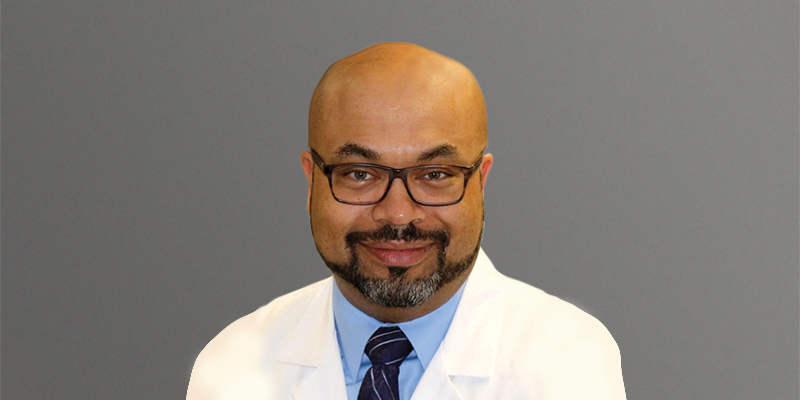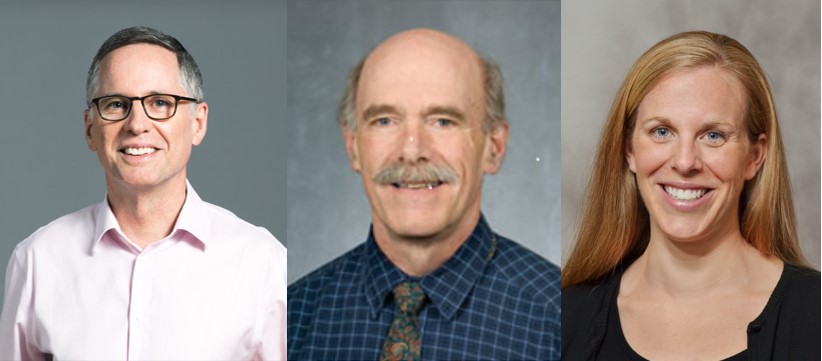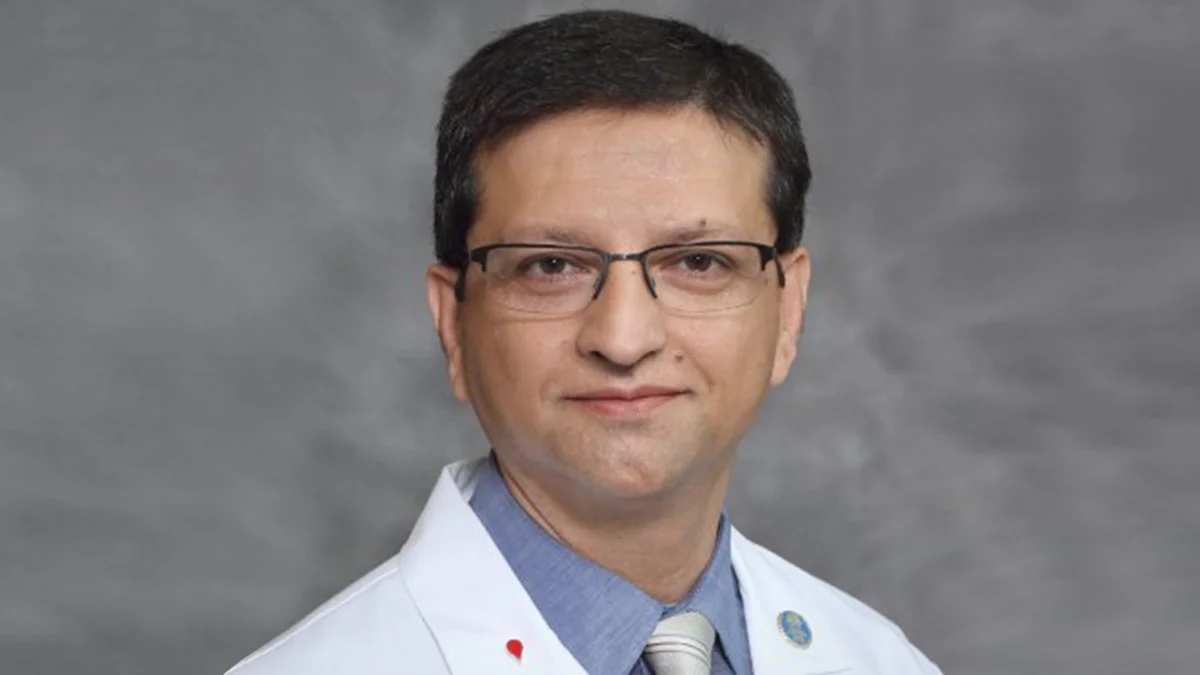
Craig Cole, MD, of the Karmanos Cancer Institute, spoke with Blood Cancers Today about the family tragedies that made him an oncologist, his commitment to mitigating disparities for Black patients with myeloma, and the aquatic hobby most people would be surprised to learn.
Where did you grow up, and when did you know you wanted to be a hematologist oncologist?
I grew up in Detroit, Michigan. I wasn’t planning on being a clinician. I love astronomy and biology, so my life plan was to become an astrobiologist and go to Mars.
When I was in high school, my dad had metastatic colon cancer. He was on chemotherapy, which was rudimentary chemotherapy back in the 1980s. He was incredibly sick. He died when I was a junior in high school. In quick order, my grandfather had prostate cancer and died when I was a freshman in college at Michigan State. My grandmother, who was a retired licensed practical nurse, took care of both my dad and my grandfather. She said, “By the way, I’ve had colon cancer this whole time. I didn’t get treated because I was taking care of your father and your grandfather. So now I’m going to go in for treatment.” Of course, we were devastated.
Then, I went to Michigan State to study astrobiology. Everything was fine and dandy. I talked to her twice a week and she kept saying, “I’m fine, I’m fine.” Halfway through my freshman year, she wanted me to take her to her oncology appointment. When I got to her house in Detroit, she was super sick. It took us half an hour to get her down the stairs because she was in so much pain.
When I was sitting in the office with her, the oncologist barges in and says, “Your cancer is worse, and we need to change chemotherapy.” My grandmother wanted to go on hospice. Her doctor turned around, called her an idiot, and said it was a dumb decision. She said, “Why would you do something stupid like this? I’m not going to help you.” She kept throwing insults at her, then walked out and slammed the door. I was in shock.
Getting her back in the car, my grandmother grabs my shoulder and says, “I think you can do a better job at being a doctor.” I said, “I think you’re right.”
I went back to Michigan State and changed my major to physiology premed. That’s how I wanted to be a clinician. I saw how rude doctors can be to their patients, and I saw how important patient empowerment is. My grandmother was empowered enough to tell her doctor, “No, I’m not going to go along with what you want to do.” That became the two flags I carry to this day when I practice and what I teach about being a good physician. It’s about listening to your patient and empowering your patient.
Were there any mentors who shaped your career path?
When I was a resident, I went to the American Society of Hematology (ASH) Annual Meeting & Exposition for the first time in 1999. The plenary session was on imatinib for chronic myeloid leukemia (CML).
I knew about CML and thought about doing transplant. I knew that the mortality of CML with transplant was 25%. I sat in the audience as they went through the history of CML. I said to myself, “Oh my goodness, this is the same old stuff. It’s all known.” Then, Brian Druker, MD, gets up and talks about imatinib having a response rate of 100%. I remember thinking, “This is the turning point in all of oncology.”
Dr. Druker understood the science of CML. He designed a drug that fit the pathophysiology and had responses higher than any blood pressure medication, any cholesterol medication. There was no precedent for that in oncology, and he did it because he understood the science of the disease, not because he used some fancy chemotherapy regimen. I remember my dad, grandfather, and grandmother getting all this blunt chemotherapy, which had no science behind it.
I walked out of the plenary session saying, “I want to be a physician scientist. I want to do what he did and understand how the disease works and try to figure out a cure.”
I also met Robert Kyle, MD, who did a lecture at the University of Michigan. He is the Brian Druker of myeloma. He really understands this disease and its history. He recommended that I work with Ken Anderson, MD, at the Dana-Farber Cancer Institute. So, I went to Dana-Farber for a year and worked in the lab with Ken Anderson and Klaus Podar, MD, MSc, PhD, to get an understanding of myeloma biology. I was there when lenalidomide and bortezomib came out. I was in the lab and at ground zero for a lot of that stuff, and that really hooked me.
Can you talk about your current clinical research?
My career took a couple of different turns. One of the biggest problems is how difficult it is to become a clinical trialist and do academics when you have tremendous medical debt.
After I finished my fellowship, I went to Gundersen Lutheran, where I could do research as a hematologist but still work at paying off my medical school debt. I worked there for five to six years. Then, I came back to the University of Michigan and continued to get scholarships and grants. I was full course clinical trials and myeloma therapeutics and doing early phase and middle phase clinical trials.
Then, I noticed something as I kept doing talks for patients with myeloma. The first slide was always patient demographics and how many people in the United States have myeloma. That instance is twice as much in people of African descent than in Caucasians. But when I looked out in the audience, everyone was White. I said, “Wait a minute. There’s something wrong here. How is this disease twice as common in Blacks, but every audience I talk to is all White? I’m the only Black person in the room, and I don’t have myeloma.”
Then I got back to the University of Michigan, and I’m looking at the patients I have in clinic, and everyone’s White. No Hispanics, no Asians, no Blacks. I started to look at the disparities in myeloma in the mid-2000s and 2010s. Between 2010 and 2017, the average number of Black people enrolled in myeloma clinical trials was 5%, and the percentage of myeloma patients in the United States that are Black is 20%.
I kept advocating and saying, “We need to do something about this.” It didn’t get much traction up until the past six to seven years. I began to take this three-pronged approach: (1) Make my colleagues in myeloma research aware of these disparities. (2) Push to enroll equally on clinical trials to make myeloma patients—especially Black myeloma patients—aware of these disparities. (3) Outreach to the community and to communities of color to make them aware of the disease itself.
There’s so much data showing how people of color are diagnosed late and treated late. They have more disease complications because of the delays in diagnosis between people of color and Caucasians in the United States.
I still put patients on clinical trials, but my career has come full circle. It started with my grandmother and patient empowerment. It’s currently back to where it started to empower patients—especially patients of different socioeconomic status, patients of color, and patients of different age groups—to be enrolled in clinical trials and to be empowered to talk to their doctors to get the best available therapy for myeloma. My career is still in myeloma therapeutics, but a large part of my life is dedicated to trying to eliminate these disparities in care.
What do you hope to see in the field over the next 10 years?
In the next 10 years, I think that we will cure myeloma. There are anecdotal reports of patients having long-term remissions with myeloma. The technology we have with bispecifics, chimeric antigen receptor T-cell therapy, T-cell engagement, and novel therapeutics will cure the disease for some patients.
The real challenge is that I don’t consider a cure for the disease until everybody has access to that cure. It doesn’t make any sense that you cure myeloma for the richest people in the United States that have access to the drugs. You cure maybe 2-5% of the population when you only have that treatment accessible to the wealthy and to the patients who are most well connected to an academic center. The people I worry about not getting cured are the people in the inner cities, the people in rural populations, the elderly, the poor, the uninsured, and the people in countries that still don’t have access to a lot of these drugs.
When people talk about unmet needs in myeloma, they generally talk about high-risk myeloma and cytogenetically mutated myeloma. Nobody talks about the people who we don’t enroll in clinical trials. That is the true unmet need. The elderly, the people of color, and the people in countries around the world that don’t have access to these drugs.
Do you have any hobbies outside of work that most people would be surprised to learn?
I collect Star Wars stuff. Everybody knows about my Star Wars obsession, but a lot of people don’t know I have a 150-gallon saltwater reef fish tank. There’s a serpent starfish in the tank that’s about 14 years old. He’s huge, and I have to feed him crab meat by hand.
I also play guitar. That’s my own gig I do at home. I have a 12-string acoustic guitar, and I play classic rock stuff.






 © 2025 Mashup Media, LLC, a Formedics Property. All Rights Reserved.
© 2025 Mashup Media, LLC, a Formedics Property. All Rights Reserved.